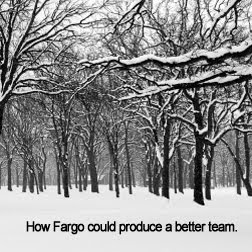
While 2010 may mark the first time marketers put more money into online advertising than newspapers — newspaper spending falls to $25.7 billion and online ad spending rises to $25.8 billion — next year will be one of the most trying for advertising that works.
On one hand, recent analysis from Better Advertising shows few consumers choose to opt out of targeted online advertising programs. On the other hand, consumers will continue to tell marketers, publishers, and pollsters that they don't want targeted advertising.
As if that wasn't challenging enough, some predictions for online advertising are almost too painful to read. Take the six predictions from Jesse Thomas that recently appeared on Mashable. Some are postscript predictions and some will lead to advertising campaign failures.
Why Will 2011 Be A Year Of Confusion?
Earlier this year, I was very optimistic that 2010 would be considered the year of integration. In many ways, this proved to be true. Companies worked diligently to better align various functions of marketing, advertising, and public relations. Those campaigns worked exceptionally well.
Yet, for all the successes, integration has had some unintended consequences as bad practices began to spread from one discipline to the other, creating one wave after another of thinking that is increasingly tactical. The Masahable predictions underscore the problem. Let's highlight some inherent problems with the predictions.
Channel Focus Or Communication Focus?
With increasing frequency, some companies are asking for proven platform strategies like how to get more fans on Facebook or more followers on Twitter. They are asking the wrong question. Or, at least, they are asking questions in the wrong order.
Companies might ask how they can introduce their product to more people or increase sales or become a subject matter expert in the industry. And only then do they need to ask how Facebook and Twitter might fit into that, if they fit in at all.
Global Reach Or Location Based?
This is one of two areas where Thomas contradicts himself in the post. He emphasizes the importance of many, but then provides relevance to smaller segmentations. If the number of Facebook "likes" is so important, why bother with location-oriented ads?
The reason is because location-based advertising isn't new. If a company has a physical location, then it only makes sense that location-based advertising works. Retailers that don't market to the radius around their establishments, whether that includes online advertising or direct mail, are missing what could be their most regular customers. If those people connect to Facebook (and people from the Sudan do not), all the better.
Influencers Or Micro-Networks?
This is another problem with the "many" to "few" networking game. Online influencers are generally considered such because they amass a large following. This seems to contradict an increasing trend where people are scaling back and segmenting the associations they make online.
Riddle me this. If more consumers spend more time in micro networks, then how can "influencers" amass thousands? Simply put, they can't except as a matter of perception. Case in point. I invest almost 40 percent of my Facebook time in one Facebook group. That means even though several dozens of pages count me as a "like," I'm mostly AWOL from their pages.
Predictable Or Professional?
While it is not true in every case, predicting that Silicon Valley could be the next Madison Avenue could have unintended consequences. For one thing, I don't see many creative directors and copywriters lining up to make less money Tweeting blurbs alongside people with two months of customer service experience (one company calls them "web presence professionals").
More likely, if there is a trend to focus more on tactical channel development (social networks) over adding creative into the strategic communication mix, then my guess is creative professionals will jump ship and enter the entertainment, fashion, and product design fields because it seems that consumers appreciate their talents more than some business owners anyway. Once they're gone, you can expect consumers to hate advertising all the more.
Personally, I'm very optimistic about 2011. However, with the influx of contradictory tactics, I anticipate more companies struggling against conflicting tactical ideas and not enough of them developing strategic marketing plans that balance the mix and meet their business objectives. It will be interesting to watch and even more interesting to participate.
















